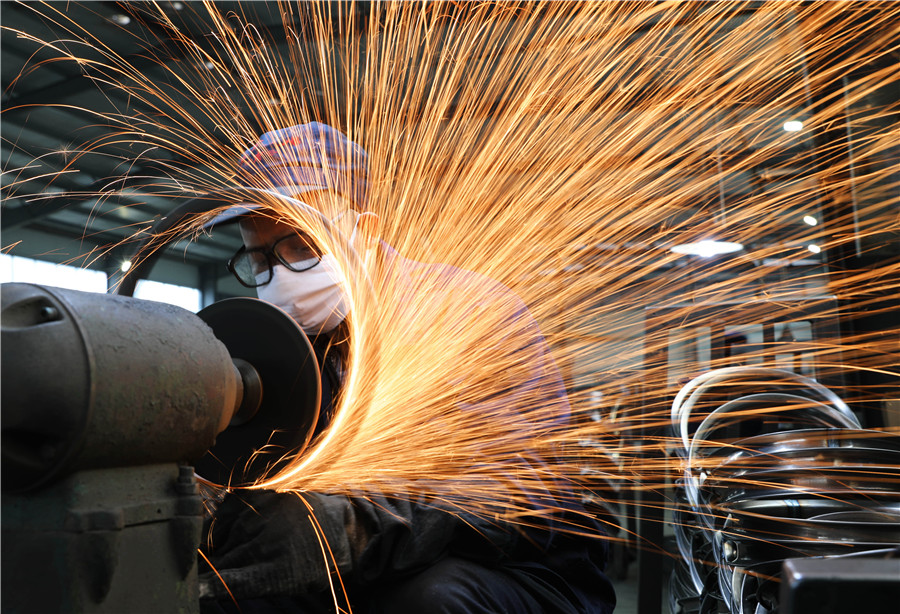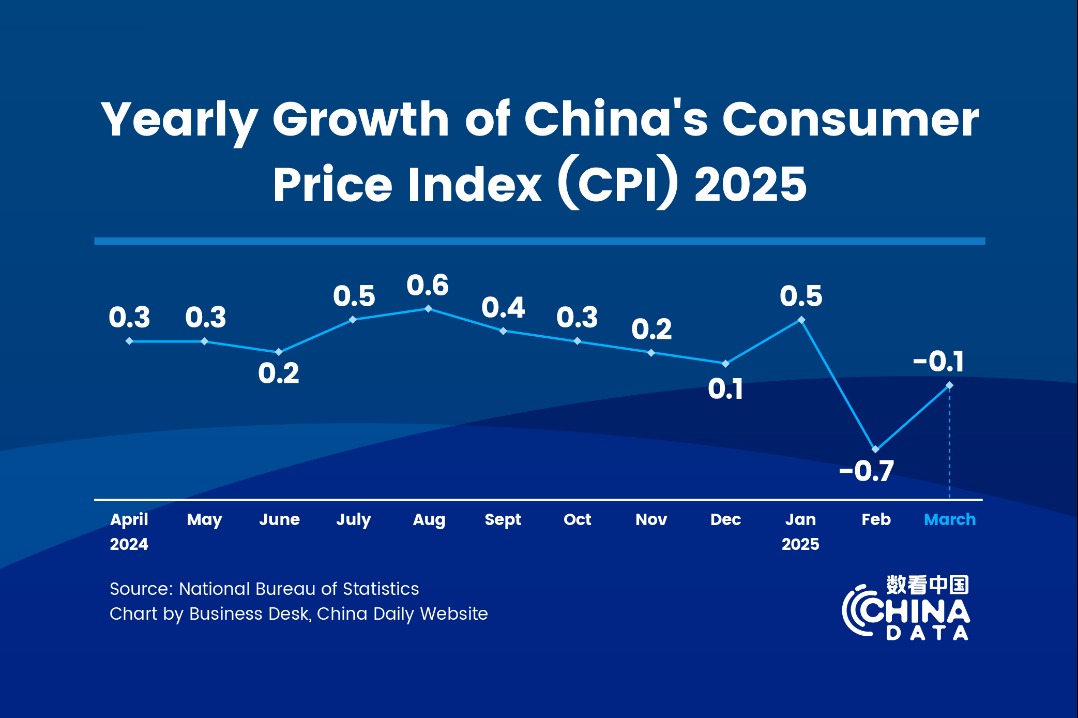Epidemic's impact on economy to be 'manageable'


SIIS: Harm will not be far-reaching if outbreak under control by March-end
The COVID-19 epidemic's overall impact on the Chinese economy will be manageable as the number of new cases has been steadily declining recently across the country, including in Hubei province, and because of the robust supportive measures taken by the government, a report by the Shanghai Institutes for International Studies said.
The negative economic effects of the disease will also serve as an important catalyst for the formation of a national consensus on high-quality development, paving the way for deeper social and economic reforms in China, it said.
"The multitude of the economic impact from the COVID-19 outbreak depends on how long it takes to get the virus under full control," Chen Dongxiao, president of the Shanghai-based think tank, said in a preface of their report.
"Things are clearing up in other parts of China outside Hubei province, where local authorities are trying to strike a balance between fighting the epidemic and reviving economic life with tailored measures. Therefore, the epidemic is likely to be kept in check within the first quarter, with controllable impacts on China's economy for the whole year, despite its severe short-term damage," Chen said.
It is believed the epidemic can bring new opportunities for healthcare, online services, and some other industries, he added.
The latest statistics in China show the epidemic continues to trend downward.
A total of 125 new confirmed cases of COVID-19 and 31 deaths were reported on Monday on the Chinese mainland, bringing the two numbers up to a total of 80,151 and 2,943, respectively.
As of Monday midnight, some 47,204 people had been discharged from the hospital after recovering from the virus, said the National Health Commission.
Regions outside Hubei reported single-digit or no increases in daily new confirmed infections, the commission said.
The World Health Organization also said on Thursday that its greatest concern in relation to COVID-19 is no longer China, but the rest of the world. The reason behind the WHO statement is that the number of new cases in other parts of the world now exceeded the new cases reported in China for the second day in a row.
Though less fatal than the Severe Acute Respiratory Syndrome outbreak in 2003, COVID-19 is more widespread and contagious. Its impact on China's economy first struck tourism and consumption before the Spring Festival, and then spilled over to hit supply chains since early February.
In order to curb the spread of the virus, the highest emergency response levels were activated across China shortly after the lock down of the city of Wuhan on Jan 23. The Spring Festival holiday was prolonged and people were advised to stay at home and avoid large gatherings.
Chinese authorities have taken a series of strong steps to shore up the economy against the epidemic's impact, including flexible and targeted monetary policies and measures to help market participants resume economic activity.
The response to contain the virus by the central authorities and local governments is reflected by a whole range of emergency measures they have taken. These include stringent travel restrictions, regular information disclosure and sustained material supplies, which demonstrates the strengths of China's system in this "people's war" against the epidemic, the report explained.
The report argued the magnitude of the economic impact ultimately depends on how long the epidemic lasts, and the impact will not be far-reaching if the outbreak can be brought under control by the end of March.
At this time, economists are most concerned about two things-difficulties small and medium-sized enterprises face as they resume work, and the effects of the production shutdown in areas affected by the disease.
Compared with deep-pocketed multinationals, which are better positioned to resume production, smaller companies that account for 90 percent of Chinese enterprises have less financial flexibility to withstand long-lasting disruptions, the report said.
With the growing prospect of the novel coronavirus being brought under full control outside Hubei by the end the first quarter, the economic impact on both the supply and demand sides is likely to be limited. But the production shutdown in epidemic areas where the supply chain was disrupted may have some far-reaching effects, according to the report.
Targeted policies and measures to help enterprises get through this difficult time have been rolled out, and many are aimed at small, medium and micro-sized enterprises. They give special support to the worst-hit epidemic areas, and enterprises that are important in supply chains are prioritized in government policies.
There are some positive impacts of the epidemic on China's reform and long-term development, despite the many challenges the COVID-19 has brought to the economy and society, the report stated.
Since February, China's central bank has improved liquidity through several rounds of open market operations to drive down interest rates and stabilize the capital market. Those steps are also in line with the "flexible and moderate" monetary policy adopted at the Central Economic Work Conference in December 2019.
On Feb 11, the Ministry of Finance announced that a 1.848 trillion yuan ($264.9 billion) new local government bond quota had been allocated for this year to stabilize the economy.
The authorities also decided to cut some pension contributions and insurance fees to help companies affected by the COVID-19 outbreak, especially SMEs. They also called on financial institutions to make interest rate concessions to brick-and-mortar businesses, limit loan interests rates, and reduce financing costs for SMEs.
Government, law enforcement agencies and trade associations are also expected to provide force majeure remedies and credit relief for epidemic-affected enterprises that have failed to fulfill their contractual obligations.
China's strenuous efforts to balance public security with economic growth showcased the resolution of the central leadership to promote the building of a modern economic system, optimize the industrial structure and achieve sustainable development.
With joint social efforts to combat the epidemic, China's national governance capacity and the social governance system have been further strengthened.
Profound reforms were launched in epidemic monitoring and control, disaster relief, mobilization, management and distribution of aid and in other areas. Multiple policy innovations are also being made, the report said, citing examples of the e-government system and business environment-improving policies.
The public's spontaneous response, including staying at home, demonstrates strong public trust in the government and recognition of its leadership in fighting the epidemic, for which the Chinese authorities effectively mobilized national resources for worst-hit areas, the report added.
It said the battle against the epidemic helped strengthen the digital economy and generate new momentum for economic growth while helping optimize China's economic structure and the public's asset allocation capabilities.
With the rapid development of manufacturing in interior provinces, regional supply chains are likely to be further bolstered as more measures are taken to enhance their stability, it said.
The report suggested using foreign exchange reserves as a quasi-fiscal tool for the purchase of emergency supplies, which could add to China's financial flexibility at a critical juncture, reduce government spending, allay longstanding concern over China's holding of United States Treasury securities and help reduce government medical insurance expenditures.
Widening capital market access could improve corporate liquidity and boost science and technology innovation, the report suggested.
- Economy to be steadied by coordination
- World CEOs optimistic about China's economic outlook
- Business partners remain confident of China's irreplaceable role in supply chains
- Freight trains maintain operation to support production resumption
- Roaring Chinese factories bring global supply chain back to gear




































